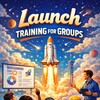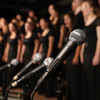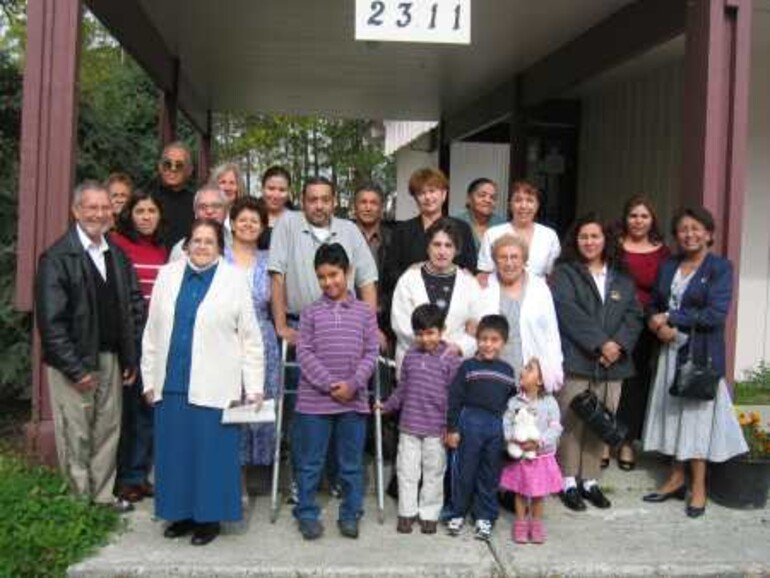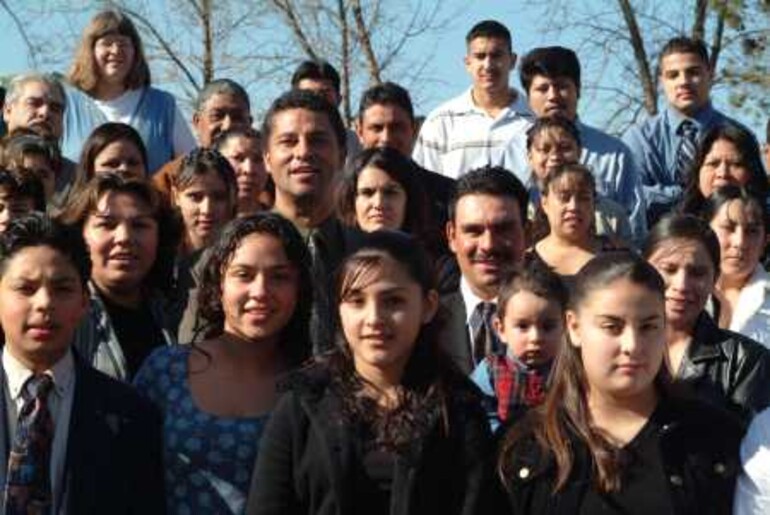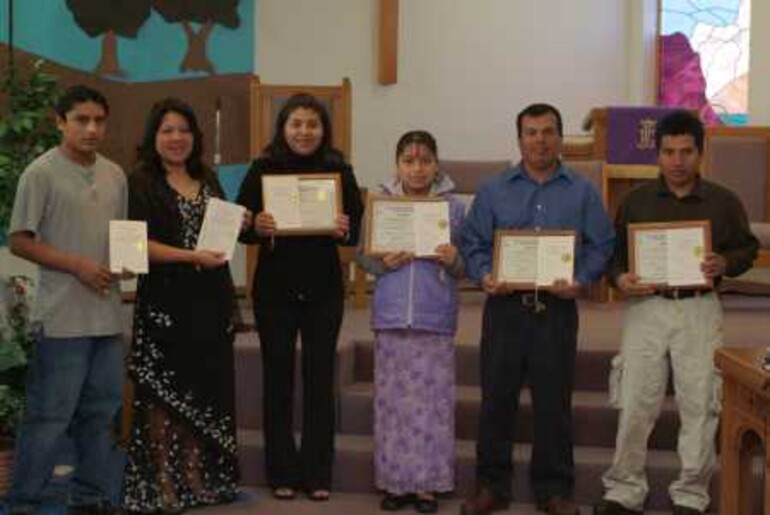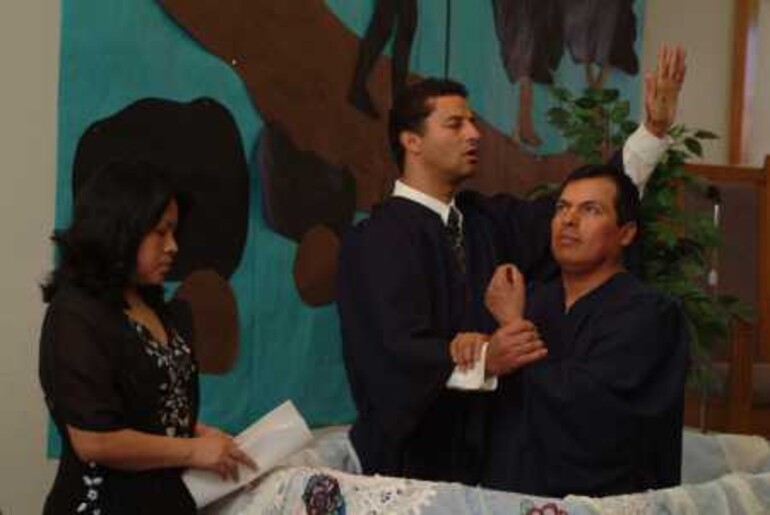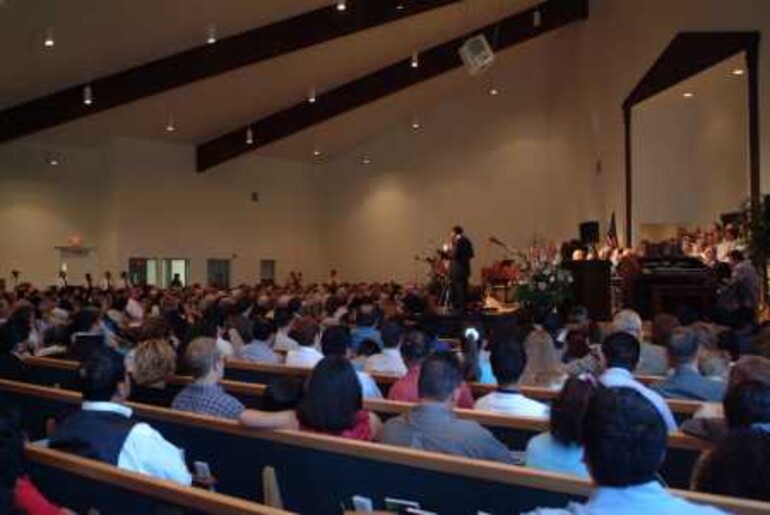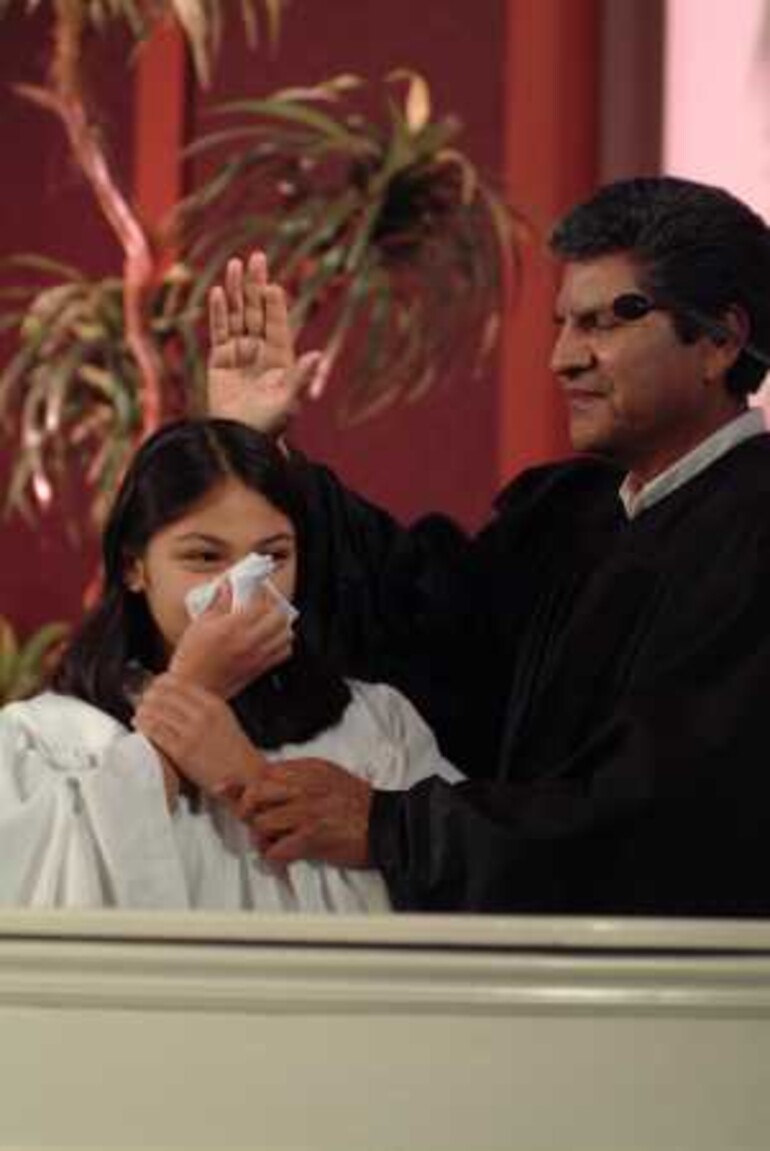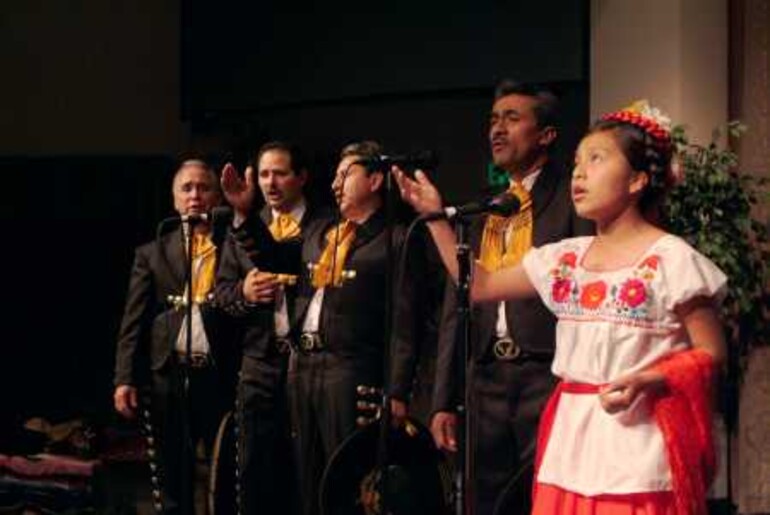No ethnic group is growing faster in America than the Hispanic segment. With more than 41 million Hispanics in the United States, some estimate that they will comprise a third of the country’s population by 2050. Everyone, from politicians to corporations, is trying to capture the Hispanic market.
The rapid growth of Hispanics in the Northwest represents both opportunities and challenges for the Adventist Church as we try to share the message of salvation. A report from the Barna Research Group, based on surveys among more than 4,000 adults, shows that the faith of the Hispanic population is steadily shifting from its traditional Catholic-oriented spirituality to a more diverse spiritual hybrid. Though Hispanics are affiliated with the Catholic Church worldwide, Barna found that the strength of that bond in the U.S. is rapidly deteriorating, leaving many Hispanics in a "vacuum of faith" because, although they are losing faith in the Catholic Church, very few are attending mainline Protestant churches.
Moreover, church-growth experts suggest that immigrant groups are more receptive to the gospel than indigenous groups. Therefore, sowing in this fertile ground now could be a blessing and salvation for thousands of people who do not know Jesus as a personal Savior.
The late Manuel Vasquez, in his book, The Untold Story, points out that the beginning of the Hispanic work in the North Pacific Union Conference can be traced to Washington’s Yakima Valley and to Weiser, Idaho, in 1956. As I read his book and pondered my own experience with the growing Hispanic segment of the North Pacific Union Conference, I asked myself why we have a Hispanic work in this union today. Why is it growing so fast?
I see a clue to the answer in one common denominator: Ordinary people taking advantage of opportunities to share the love of Jesus. We call this activity "evangelism." Evangelism is thinking like a missionary. It’s an intense desire on the part of church members, teachers, pastors and administrators to reach out to people wherever they are, whoever they are, whatever language they speak and whatever they look like.
I am happy to belong to a church that not only believes in the great commission of Jesus and the three angels’ messages of Revelation 14, but whose leaders and members actually preach at home, to neighbors and friends. Here are some examples of people capitalizing on opportunities to share the love of Jesus throughout the Northwest.
Just a handful of church members initiated the Hispanic work in Anchorage, Alaska, in the early 1980s, opening a new era of evangelism in America’s “last frontier.” They originally met in the Anglo O’Malley Church but eventually moved to the Northside Church until they raised funds for their own location in an area called the “Red Zone” by local police. The Hispanic church in Alaska became a company on February 5, 1994, with 26 members.
According to Ricardo Cabero, current Anchorage Spanish Church pastor, various challenges affect the development of the church in Alaska, including the social conditions of the area surrounding the church, constant emigration of Hispanics seeking better jobs, and the geographic sprawl of Alaska’s Hispanic population. Ricardo explains that Alaska’s Hispanics also are “Americanized,” which makes it much more difficult to reach them with the traditional methods that the church currently employs.
Since a year ago, Anchorage Hispanic members have been meeting in a location offering more comfort and security to both members and visitors. The church is growing through in-home small groups and personal evangelism. It is a slow work compared to the amazing results of public evangelism, but Ricardo sees a great opportunity to reach the more than 11,000 Hispanics who call Alaska home today. This last frontier is and must be the “missionary frontier.”
The Hispanic work in the Idaho Conference started thanks to the vision of an English-speaking pastor who seized the opportunity to share Jesus with people different from himself. Just a few Hispanic Adventist members gathered in the Anglo church in Weiser, Idaho, in 1956, dreaming of someday having their own Hispanic church. But they did not have a leader until Harry Gray, Weiser's Anglo church pastor, baptized Juan Olveda and his wife in 1961. Juan and his wife gave Bible studies for more than a decade in Weiser and surrounding areas.
When William Morgan, a Bible worker, came to the area, he contacted the Olvedas. He was impressed with how many people the Olvedas had contacted, and he concluded that a Hispanic pastor was needed to harvest and to expand the Hispanic work. From that moment on, the Hispanic work in Idaho has been expanding very quickly.
For several years, Montana was the only state in the North American Division without any Adventist Hispanic presence. That changed when Roberto Correa accepted a call in 2004 to start the Hispanic work in “Big Sky Country.” The Billings English-speaking church gladly opened its doors, and the pastor joined Roberto in support of the Hispanic work.
With few Hispanics in Montana, church leaders suggested starting a bilingual church in order to reach both Spanish and English speakers. According to Roberto, "The idea is to work for the Anglos in that particular area of the city and, at the same time, to give the Hispanics the chance to have a place for worship," Roberto explains. They now offer services and sermons in both English and Spanish. According to Roberto, they are trying to have only one group to satisfy each person’s spiritual needs.
The change has been a very special blessing for the Billings group. Roberto’s dream is that very soon the group will be able to be a company and then an organized church—a real possibility with God’s help.
When hundreds of Mexican farm workers, harvesters and families started to immigrate to Woodburn, Oregon, to work in the fields in the 1970s, Walt Blehm, then Oregon Conference president, grasped a great evangelistic opportunity. After the harvest, a lot of these workers decided to stay and raise their families in Oregon.
A visionary leader and a man of action, Walt convinced the conference executive committee to make the Hispanic missionary work a priority. In 1973, Frank Ottati became the first Hispanic pastor in Oregon.
Frank, with other Adventist families from California, established the first Hispanic church in Woodburn, and it in turn became the “mother” of almost all of Oregon’s Hispanic churches. Since those early days, many other members, pastors, administrators and teachers have followed one president’s example of taking advantage of opportunities to share Jesus throughout the Oregon Conference.
Farm workers provided the inspiration for another conference president, C. L. Bond, in the 1950s, who realized the great potential for the Hispanic work in the Upper Columbia Conference. Bond invited Kenneth Fleck, the Guatemala mission president, to initiate the Hispanic work in the Yakima Valley. Kenneth and his wife, Alcyon, both bilingual, moved to Granger, Washington, where they started missionary work with the Hispanic people. The English-speaking church members warmly welcomed the new converts, and through the support and collaboration of several church members, pastors, administrators and leaders, God’s work among Upper Columbia’s Hispanic population has grown rapidly and in a miraculous way.
Conversions and miracles are still taking place in Upper Columbia under the leadership of Eddie Allen, Hispanic coordinator, and an excellent group of pastors and evangelists who are eager to save people for Jesus.
According to available records, the Hispanic work in the Washington Conference started in 1968 with only 20 baptized members. The first Hispanic church, which was located in Bellevue, organized in 1977 with 33 members. The Bellevue Church grew to 60 members, gathering in the English-speaking church.
Under Manuel Cabral’s leadership, the Hispanic work extended to Seattle, Renton, Federal Way and Tacoma. One dedicated lay worker, Jesus Padilla, moved from Los Angeles to Bellingham and, after finding no Hispanic church there, asked Manuel to help him to create one. Manuel agreed to the challenge without realizing that there was only a group of five people in Bellingham.
Refusing to be discouraged, Manuel told the members, “With God’s help, we are going to establish the Hispanic work in this place.” He met with the members, made work plans and invited them to pray for the development of the Hispanic work in Bellingham. As a result of the loyal work and prayers of members and pastors, we have a beautiful Hispanic congregation in this northwestern Washington city.
God continues to bless in Washington. The Hispanic work has grown by 46 percent in the last three years and boasts a membership of more than 1,200. Aggressive plans for Washington’s Hispanic work include establishing new churches, strengthening existing churches and starting a new work on the Olympic Peninsula.
